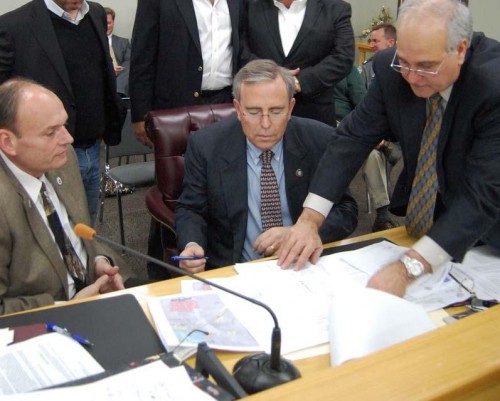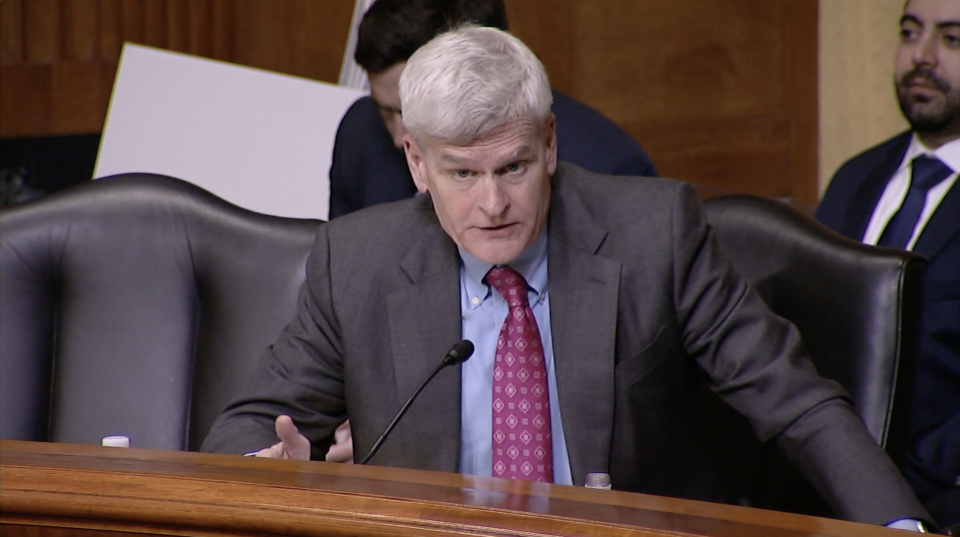
T’bonne levee district inks LDWF agreement for J-2
February 23, 2010
A day in a soldier’s life
February 25, 2010The devastation of hurricanes Katrina and Rita in the fall of 2005 is still apparent is some areas of Louisiana.
This rings true for quite possibly no group of proud Louisianans more than the state’s once great fisheries industry.
Katrina and Rita caused millions of dollars of damage to the fishery infrastructure and kept fishermen and merchants out of work for months if not years.
That’s why the National Marine Fisheries Service gave $29 million to the Louisiana Department of Wildlife and Fisheries to divvy up and offer to those fishermen who needed it.
LDWF sought out those who lost money due to the hurricanes by looking at the value of fishermen’, vessel owners’, and retailers’ trip tickets.
Trip tickets record how much seafood fishermen sell to retailers and how much seafood retailers buy from fishermen.
“So we built a program whereby we looked at those transactions for one year immediately preceding hurricane Katrina to identify who was eligible to receive these payments,” said LDWF Marine Fisheries Biologist Martin Bourgeois. “We identified as many as 9,000 eligible participants. Then, we sent out packets to all who were eligible containing a few forms that had to be completed and returned.”
Bourgeois said LDWF also held many meetings in fishing communities to explain the program and help people with the forms.
After the deadline for returning the paperwork was pushed back twice, it passed last year, but still only about 5,500 of the eligible 9,000 people applied.
South Central Planning & Development Commission Economic Development Administrator Cullen Curole said many fishermen refused to apply because they do not like dealing with government.
“I think, as a whole, fishermen are skeptical that there’s going to be a catch to it,” he said. “They’re a little pessimistic, and they didn’t really understand what the program was about.”
This money is a direct grant and does not have to be paid back. Those who applied received a share of the initial allocation of $26.8 million in June 2008, leaving $3.2 million of unclaimed cashy in the pool.
“Our goal is to distribute that balance by the end of April,” said Bourgeois. “We’ll give the $3.2 million back to those who received payments in the first round. We have all the necessary paperwork from the first round, so no one needs to do anything.”
Bourgeois said the department determined the size of the share given to each fishing entity by the particular type of seafood bought or sold. They then split up money by dividing the people into three tiers.
“Each fishery got a share of the funds available based upon the percentage of its relative value to total landing for that particular year,” he noted. “For instance, shrimp being the state’s most valuable industry, received the largest amount of those funds. The fresh water fin fishery happened to contribute the least amount of dollars to total landing, so they received the fewest amount of dollars.”
However, charter fishermen were just as affected by the hurricanes as commercial fishermen, but since they do not sell their catch to merchants, they didn’t receive trip tickets.
This fact left them out of the three tiers, but LDWF realized the error and granted about 700 eligible charter fishermen a flat rate check of about $700.
“I’m sure to the charter fishermen that were comparing their checks to the big shrimp boat owners, then the charter fishermen got a raw deal,” said Curole. “But if they were comparing them to the little mom and pop fishermen in the lower tier, then it may have been comparable.”
A spokesman for LDWF stated that if Charter Boat Logbooks would have been implemented into the original tier system, charter fishermen may have received a larger amount of money.
Bourgeois said he hopes the fishermen and merchants who received checks will use them toward their business, but it is not required.
“There is no mechanism by which we can insure they went out and bought a new engine, or replaced their nets, or replaced their crab traps,” said Bourgeois. “To do that would eat up a lot of the administrative cost, fewer dollars we’d give to the fishermen if we used that approach.”
Although the deadline has passed to recoup lost money from Hurricanes Katrina and Rita, Louisiana government is preparing to present a similar program to help those who need financial help recovering from Hurricanes Gustav and Ike.
“The fisheries industry is vital to Louisiana’s economic success, and through these programs we will be able to assist these business owners who and still struggling to recover from the 2008 hurricanes so that they can continue to sell one of Louisiana’s greatest exports – it’s seafood – across the nation,” said Louisiana Recovery Authority Executive Director Robin Keegan.
Outreach meetings will be held to explain this program. Terrebonne Parish Main Library in Houma hosts one tonight, Feb. 24, at 6 p.m., and Belle Chase Auditorium hosts another tomorrow, Feb 25, at 6 p.m. All commercial fishermen are urged to attend.







